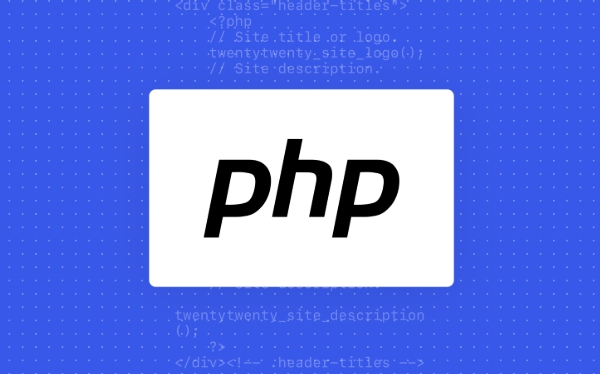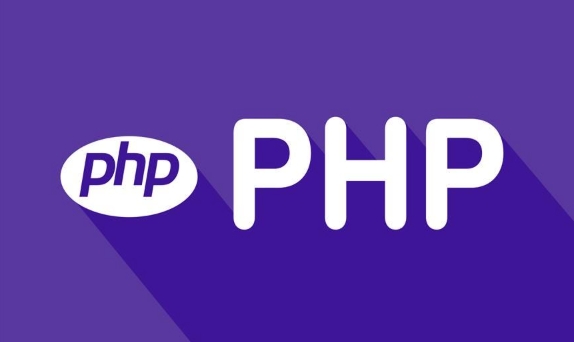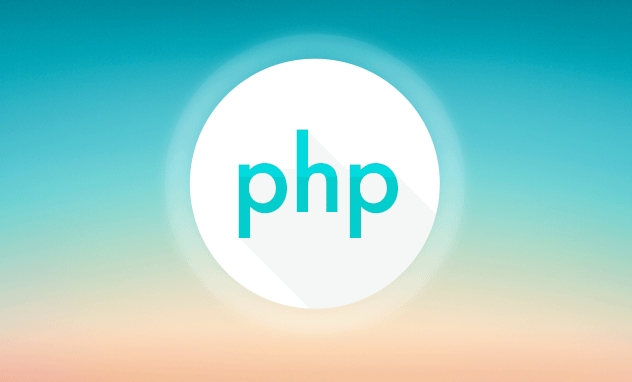Integrating PHP with Machine Learning Models
Use a REST API to bridge PHP and ML models by running the model in Python via Flask or FastAPI and calling it from PHP using cURL or Guzzle. 2. Run Python scripts directly from PHP using exec() or shell_exec() for simple, low-traffic use cases, though this approach has security and performance limitations. 3. Use shared storage like databases or Redis where PHP queues prediction requests and a Python service processes them asynchronously, ideal for long-running tasks. 4. Consider JavaScript-based ML with TensorFlow.js for frontend inference, allowing PHP to manage data while offloading predictions to the client or Node.js. Always validate inputs, isolate ML logic, cache results, and monitor performance to ensure efficient integration between PHP and ML models.

Integrating PHP with machine learning (ML) models isn't the most common approach—Python dominates the ML world—but it's entirely possible and sometimes necessary, especially when working with legacy PHP applications or CMS platforms like WordPress. Here's how you can effectively connect PHP with ML models in real-world scenarios.

1. Use a REST API to Bridge PHP and ML Models
The most practical and scalable method is to expose your ML model via a REST API, typically built in Python using frameworks like Flask or FastAPI, and call it from PHP using cURL or GuzzleHTTP.
Why this works:
- ML models (especially deep learning) run best in Python with libraries like TensorFlow, PyTorch, or scikit-learn.
- PHP handles web logic, user input, and display; Python handles prediction.
Example: Python Flask API
from flask import Flask, request, jsonify
import joblib
app = Flask(__name__)
model = joblib.load('model.pkl')
@app.route('/predict', methods=['POST'])
def predict():
data = request.json
features = [data['feature1'], data['feature2']]
prediction = model.predict([features])[0]
return jsonify({'prediction': int(prediction)})
if __name__ == '__main__':
app.run(port=5000)Call from PHP
$data = ['feature1' => 5.1, 'feature2' => 3.5];
$ch = curl_init('http://localhost:5000/predict');
curl_setopt($ch, CURLOPT_RETURNTRANSFER, true);
curl_setopt($ch, CURLOPT_POSTFIELDS, json_encode($data));
curl_setopt($ch, CURLOPT_HTTPHEADER, ['Content-Type: application/json']);
$response = curl_exec($ch);
$result = json_decode($response, true);
curl_close($ch);
echo "Prediction: " . $result['prediction'];This decouples your frontend/backend from model complexity and allows independent scaling.

2. Run Python Scripts Directly from PHP (Simple Cases)
For lightweight models or batch processing, you can execute a Python script directly from PHP using exec(), shell_exec(), or proc_open().
Example:
$output = shell_exec('python3 predict.py 5.1 3.5');
echo $output;And predict.py:

import sys
import joblib
model = joblib.load('model.pkl')
feature1 = float(sys.argv[1])
feature2 = float(sys.argv[2])
prediction = model.predict([[feature1, feature2]])[0]
print(prediction)Caveats:
- Security risk if user input isn't sanitized.
- Slower due to process spawning.
- Harder to debug and scale.
Best for internal tools or low-traffic applications.
3. Use Shared Storage (Files, Databases, Redis)
In some setups, you might have PHP write input data to a database or file, and a separate Python service polls for new requests, runs predictions, and writes back results.
Workflow:
- PHP inserts a record into a
predictions_queuetable with status "pending". - A Python daemon checks the queue, runs the model, updates result and status.
- PHP retrieves the result asynchronously (e.g., via AJAX or polling).
This is useful for long-running predictions or background tasks.
4. Leverage JavaScript-Based ML (Alternative for Frontend)
If you're open to shifting some logic, consider TensorFlow.js. You can train a model in Python, convert it to TensorFlow.js format, and run inference directly in the browser or Node.js.
PHP still handles authentication and data storage, while prediction happens client-side or via a Node.js microservice.
Key Tips for Success
- Never expose model files or training logic in PHP—keep ML code isolated.
- Validate and sanitize inputs rigorously before sending to ML endpoints.
- Cache predictions when possible (e.g., using Redis) to reduce latency.
- Use JSON for communication—it's lightweight and universally supported.
- Monitor performance—ML inference can become a bottleneck.
Bottom Line
PHP isn't ideal for training or running ML models natively, but it integrates well via APIs or inter-process communication. The key is to use the right tool for each job: PHP for web handling, Python for machine learning. With a clean API layer, the two can work together seamlessly.
Basically, keep the model in Python, expose it safely, and let PHP do what it does best—serve web content.
The above is the detailed content of Integrating PHP with Machine Learning Models. For more information, please follow other related articles on the PHP Chinese website!

Hot AI Tools

Undress AI Tool
Undress images for free

Undresser.AI Undress
AI-powered app for creating realistic nude photos

AI Clothes Remover
Online AI tool for removing clothes from photos.

Clothoff.io
AI clothes remover

Video Face Swap
Swap faces in any video effortlessly with our completely free AI face swap tool!

Hot Article

Hot Tools

Notepad++7.3.1
Easy-to-use and free code editor

SublimeText3 Chinese version
Chinese version, very easy to use

Zend Studio 13.0.1
Powerful PHP integrated development environment

Dreamweaver CS6
Visual web development tools

SublimeText3 Mac version
God-level code editing software (SublimeText3)

Hot Topics
 Laravel lazy loading vs eager loading
Jul 28, 2025 am 04:23 AM
Laravel lazy loading vs eager loading
Jul 28, 2025 am 04:23 AM
Lazy loading only queries when accessing associations can easily lead to N 1 problems, which is suitable for scenarios where the associated data is not determined whether it is needed; 2. Emergency loading uses with() to load associated data in advance to avoid N 1 queries, which is suitable for batch processing scenarios; 3. Emergency loading should be used to optimize performance, and N 1 problems can be detected through tools such as LaravelDebugbar, and the $with attribute of the model is carefully used to avoid unnecessary performance overhead.
 Object-Relational Mapping (ORM) Performance Tuning in PHP
Jul 29, 2025 am 05:00 AM
Object-Relational Mapping (ORM) Performance Tuning in PHP
Jul 29, 2025 am 05:00 AM
Avoid N 1 query problems, reduce the number of database queries by loading associated data in advance; 2. Select only the required fields to avoid loading complete entities to save memory and bandwidth; 3. Use cache strategies reasonably, such as Doctrine's secondary cache or Redis cache high-frequency query results; 4. Optimize the entity life cycle and call clear() regularly to free up memory to prevent memory overflow; 5. Ensure that the database index exists and analyze the generated SQL statements to avoid inefficient queries; 6. Disable automatic change tracking in scenarios where changes are not required, and use arrays or lightweight modes to improve performance. Correct use of ORM requires combining SQL monitoring, caching, batch processing and appropriate optimization to ensure application performance while maintaining development efficiency.
 The Serverless Revolution: Deploying Scalable PHP Applications with Bref
Jul 28, 2025 am 04:39 AM
The Serverless Revolution: Deploying Scalable PHP Applications with Bref
Jul 28, 2025 am 04:39 AM
Bref enables PHP developers to build scalable, cost-effective applications without managing servers. 1.Bref brings PHP to AWSLambda by providing an optimized PHP runtime layer, supports PHP8.3 and other versions, and seamlessly integrates with frameworks such as Laravel and Symfony; 2. The deployment steps include: installing Bref using Composer, configuring serverless.yml to define functions and events, such as HTTP endpoints and Artisan commands; 3. Execute serverlessdeploy command to complete the deployment, automatically configure APIGateway and generate access URLs; 4. For Lambda restrictions, Bref provides solutions.
 A Deep Dive into PHP's Internal Garbage Collection Mechanism
Jul 28, 2025 am 04:44 AM
A Deep Dive into PHP's Internal Garbage Collection Mechanism
Jul 28, 2025 am 04:44 AM
PHP's garbage collection mechanism is based on reference counting, but circular references need to be processed by a periodic circular garbage collector; 1. Reference count releases memory immediately when there is no reference to the variable; 2. Reference reference causes memory to be unable to be automatically released, and it depends on GC to detect and clean it; 3. GC is triggered when the "possible root" zval reaches the threshold or manually calls gc_collect_cycles(); 4. Long-term running PHP applications should monitor gc_status() and call gc_collect_cycles() in time to avoid memory leakage; 5. Best practices include avoiding circular references, using gc_disable() to optimize performance key areas, and dereference objects through the ORM's clear() method.
 What is Laravel Octane?
Jul 28, 2025 am 04:12 AM
What is Laravel Octane?
Jul 28, 2025 am 04:12 AM
LaravelOctaneisaperformance-boostingpackagethatimprovesresponsetimesandthroughputbyservingLaravelapplicationsviaSwoole,OpenSwoole,orRoadRunner.1.UnliketraditionalPHP-FPM,whichbootsLaraveloneveryrequest,Octaneloadstheapponceandkeepsitinmemory.2.Thisel
 What is Laravel Octane and when is it useful?
Jul 28, 2025 am 04:13 AM
What is Laravel Octane and when is it useful?
Jul 28, 2025 am 04:13 AM
LaravelOctaneisusefulforimprovingperformanceinhigh-traffic,low-latency,orreal-timeapplicationsbykeepingtheLaravelframeworkloadedinmemoryusingSwooleorRoadRunner.1.Itexcelsinhigh-trafficapplicationsbyreducingserverloadandresponsetimethroughpersistentap
 Integrating PHP with Machine Learning Models
Jul 28, 2025 am 04:37 AM
Integrating PHP with Machine Learning Models
Jul 28, 2025 am 04:37 AM
UseaRESTAPItobridgePHPandMLmodelsbyrunningthemodelinPythonviaFlaskorFastAPIandcallingitfromPHPusingcURLorGuzzle.2.RunPythonscriptsdirectlyfromPHPusingexec()orshell_exec()forsimple,low-trafficusecases,thoughthisapproachhassecurityandperformancelimitat
 Laravel raw SQL query example
Jul 29, 2025 am 02:59 AM
Laravel raw SQL query example
Jul 29, 2025 am 02:59 AM
Laravel supports the use of native SQL queries, but parameter binding should be preferred to ensure safety; 1. Use DB::select() to execute SELECT queries with parameter binding to prevent SQL injection; 2. Use DB::update() to perform UPDATE operations and return the number of rows affected; 3. Use DB::insert() to insert data; 4. Use DB::delete() to delete data; 5. Use DB::statement() to execute SQL statements without result sets such as CREATE, ALTER, etc.; 6. It is recommended to use whereRaw, selectRaw and other methods in QueryBuilder to combine native expressions to improve security







